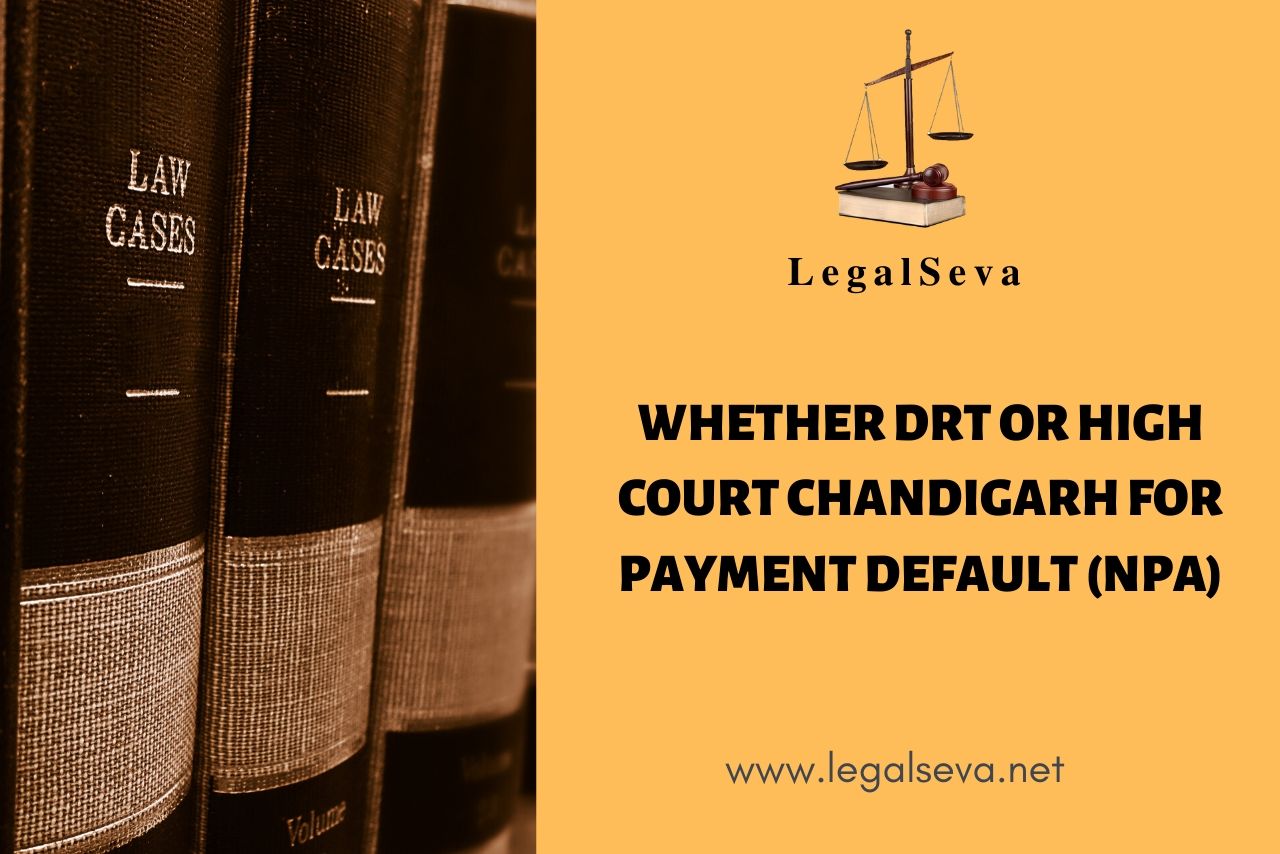Last Updated on May 8, 2020 by Satish Mishra
With the ever growing economy of our country, borrowings from banks and financial institutions have also been increasing and have more and more complicated , with the increased borrowings it is only natural that there have been a increasing number of defaulters, hence it is only natural for the need of an existence of a sound debt recovery legislation. From SICA, to RDDBFI and now to the latest legislation The SARFAESI Act were designed to deal with the growing issue. These legislations and the creation of an independent debt recovery tribunal was therefore necessary to decrease the burden on the ordinary civil courts.
The SARFAESI Act is a complete code by itself, providing for expeditious recovery of dues arising out of loans granted by financial institutions. It lets the banks as well as other financial institutions of India auction commercial or residential properties for the purpose of loan recovery.
Also read- Drt and Tenancy Rights: Where the Dispute Lies?
This Act provides for out of Court remedies that the banks and financial institutions can undertake
The DRT is the main adjudicating body with respect to matters under the SARFAESI act. According to section 34 of the act No civil court shall have jurisdiction to entertain any suit or proceeding in respect of any matter which a Debts Recovery Tribunal or the Appellate Tribunal is empowered by or under this Act to determine and no injunction shall be granted by any court or other authority in respect of any action taken or to be taken in pursuance of any power conferred by or under this Act or under the Recovery of Debts Due to Banks and Financial Institutions Act, 1993 (51 of 1993).
However there is a lack of clarity with regard to the DRTs adjudicating power as well as the civil courts limitations, various judgments have laid down precedents with respect to the same.
In the Recent Judgement of M/S Himalaya Pack & Print And Ors vs Punjab & Sind Bank And Ors, decided on the 20th of March , the issue before the Himachal Pradesh High court was regarding whether the parties must approach the DRT or High court when it comes to payment defaults.
Also Read- Types of Legal Notice
In the given case , the petitioners , i.e. M/S Himalaya Pack and ors had availed a loan from the respondents, Punjab and Sind Bank and have defaulted in payment of the same .Therefore the respondents Bank initiated proceedings of recovery against the petitioners before the Debt Recovery Tribunal bench in Chandigarh.
The respondents Bank thereafter approached the District Magistrate, Solan, by filing an application under Section 14 of the SARFAESI Act, seeking possession of the secured assets of the petitioners. This application was allowed vide order dated 31.12.2018.
Since the possession of the secured assets was not delivered to the respondents Bank, it approached the current High Court of Himachal Pradesh by filing CWP No. 2732/2019, but the same was however dismissed as being misconceived vide order dated 3.10.2019.
The respondents Bank thereafter approached the District Magistrate, Solan, for delivery of possession by filing an application to this effect on 4.3.2020.
It is thereafter that the petitioners had preferred the current writ petition under article 226 for the reliefs as quoted above.
The court believed that the petitioners under the guise of invoking extraordinary jurisdiction under Article 226 of the Constitution of India are trying to thwart the proceedings initiated by the respondents Bank against them under the SARFAESI Act.
The petitioners instead of challenging orders of the District Magistrate before the statutory forum i.e. Debt Recovery Tribunal under 7 to Section 17 of the SARFAESI Act, have approached the high Court.
Therefore, the main issue in concern is whether it is rightful for the petitioners to approach the high court without exercising the remedy provided under the SARFAESI act? It is to be discussed whether in the given situation is it rightful to approach the DRT or is the approach taken by the petitioners to the High court via Article 226 valid.
Also Read- DISTRICT MAGISTRATE DISMISSED BANK APPLICATION U/S 14 DRT LAWS
The Supreme Court has disagreed with the tendency of the High Courts in entertaining the writ petitions filed under Article 226 of the Constitution of India by the aggrieved persons without availing alternative and efficacious remedy available to them and more particularly, in the matters, which arise under the SARFAESI Act.
In the case of State Bank of Travancore v Mathew K.C[1]., the Hon’ble Supreme Court while dealing with alternative remedy under the SARFAESI Act held that:
“ The SARFAESI Act is a complete code by itself, providing for expeditious recovery of dues arising out of loans granted by financial institutions, the remedy of appeal by the aggrieved under Section 17 before the Debt Recovery Tribunal, followed by a right to appeal before the Appellate Tribunal under Section 18. The High Court ought not to have entertained the writ petition in view of the adequate alternate statutory remedies available to the Respondent. The writ petition ought to have been dismissed at the threshold on the ground of maintainability. The Division Bench erred in declining to interfere with the same.
According to the statement of objects and reasons of the SARFAESI Act the banking and financial sector in the country was felt not to have a level playing field in comparison to other participants in the financial markets in the world. The financial institutions in India did not have the power to take possession of securities and sell them. The existing legal framework relating to commercial transactions had not kept pace with changing commercial practices and financial sector reforms resulting in tardy recovery of defaulting loans and mounting nonperforming assets of banks and financial institutions. The Narasimhan Committee I and II as also the Andhyarujina Committee constituted by the Central Government Act had suggested enactment of new legislation for securitisation and empowering banks and financial institutions to take possession of securities and sell them without court intervention which would enable them to realise long term assets, manage problems of liquidity, asset liability mismatches and improve recovery. The proceedings under the Recovery of Debts due to Banks and Financial Institutions Act, 1993, with passage of time, had become synonymous with .those before regular courts affecting expeditious adjudication. All these aspects have not been kept in mind and considered before passing the impugned order.
Also Read- CAN HIGH COURT CHANDIGARH INTERVENE IN DRT MATTERS (SARFAESI ACT)
In United Bank of India vs. Satyawati , the High Court had restrained further proceedings under Section 13(4) of the Act. Upon a detailed consideration of the statutory scheme under the SARFAESI Act, the availability of remedy to the aggrieved under Section 17 before the Tribunal and the appellate remedy under Section 18 before the Appellate Tribunal, the object and purpose of the legislation, it was observed that a writ petition ought not to be entertained in view of the alternate statutory remedy available.
Similar question of law again came up for consideration before theHon’ble Supreme Court in ICICI Bank Limited and ors. vs. Umakanta Mohapatra and ors.[2], wherein it was observed as under: “Despite several judgments of this Court, the High Courts continue to entertain matters which arise under the Securitisation and Reconstruction of Financial Assets and Enforcement of Security Interest Act, 2002 (SARFAESI), and keep granting interim orders in favour of persons who are Non Performing Assets (NPAs).
In the case of Dena Bank v. Pravin Vithalrao Dorkhande[3], the High Court noted that according to Section 17(4-A), any person who is aggrieved by any of the measures referred to in Section 13(4) of SARFAESI being taken by a secured creditor can approach Debts Recovery Tribunal and can raise a grievance. As per Section 34, a civil court has no jurisdiction to entertain any suit or proceeding with regard to any matter which the DRT is empowered to adjudicate under SARFAESI. The High Court, on the basis of the above, held that the trial court rejected the application of the Bank without having regard to Section 17(4-A) and therefore committed a jurisdictional error. Hence, the order impugned was quashed and set aside. The application filed by the Bank under Order 7 Rule 11(d) was allowed. However, it was open to the landlord to take such other steps as permitted under law. The civil revision was accordingly allowed.
Also Read- PROCEDURE UNDER SARFAESI ACT, 2002 IN DRT CHANDIGARH
Further after the Amendment act 44 (2016) of SARFAESI, the ambient of the term any person, with respect to section 17 of the act has been expanded to include the borrower as well, now the borrower who has a grievance regarding any action taken by the secured creditor must on whatever ground has only one remedy ie to approach the DRT with an application , with a combined application of section 34 of the act mentioned earlier it is evident that the approach taken by the petitioners in the given case is invalid
Furthermore in the case of Dwarikesh Sugar Industries Ltd. vs. Prem Heavy Engineering Works (P) Ltd. and Another[4],it was observed that “When a position, in law, is well settled as a result of judicial pronouncement of this Court, it would amount to judicial impropriety to say the least, for the subordinate courts including the High Courts to ignore the settled decisions and then to pass a judicial order which is clearly contrary to the settled legal position. Such judicial adventurism cannot be permitted and we strongly deprecate the tendency of the subordinate courts in not applying the settled principles and in passing whimsical orders which necessarily has the effect of granting wrongful and unwarranted relief to one of the parties. It is time that this tendency stops.””
Also Read- DISTRICT MAGISTRATE DISMISSED BANK APPLICATION U/S 14 DRT LAWS
The current court therefore In view of the afforested clear legal position settled by the Hon’ble Supreme Court coupled with the fact that the petitioners have not exhausted the alternative remedy under the SARFAESI Act, held that the present petition is not maintainable and accordingly dismissed on this ground alone.
Therefore it is evident that the current matter has been settled in various precedents and it is settled law that the civil courts must not adjudicate in areas where the power is given to the DRT, therefore it is erroneous to accept such writ petitions. The debt recovery tribunals are summary courts and are designed to ease the burden on civil courts, it does not have the power to pass orders and is dedicated to only adjudicate on the rightfulness of the method applied by the secured creditors, therefore it is only rightful to approach this tribunal in debt recovery issues, and not abuse the court process by unnecessarily troubling the high courts and misusing Article 226.
Also Read- DRT Chandigarh Procedure
For case specific advice, please contact best/top/expert DRT Chandigarh Punjab Haryana Himachal Pradesh Jammu & Kashmir Lawyer Advocate of DRT 1 2 3 (High Court).
This Post is written by Rachita Yedhula.
More on 99888-17966.
[1](2018) 3 SCC 85
[2](2019) 13 SCC 497
[3]2018 SCC OnLine Bom 2800
[4] (1997) 6 SCC 450


1 thought on “Whether DRT or High Court Chandigarh for Payment Default (NPA)”
Comments are closed.